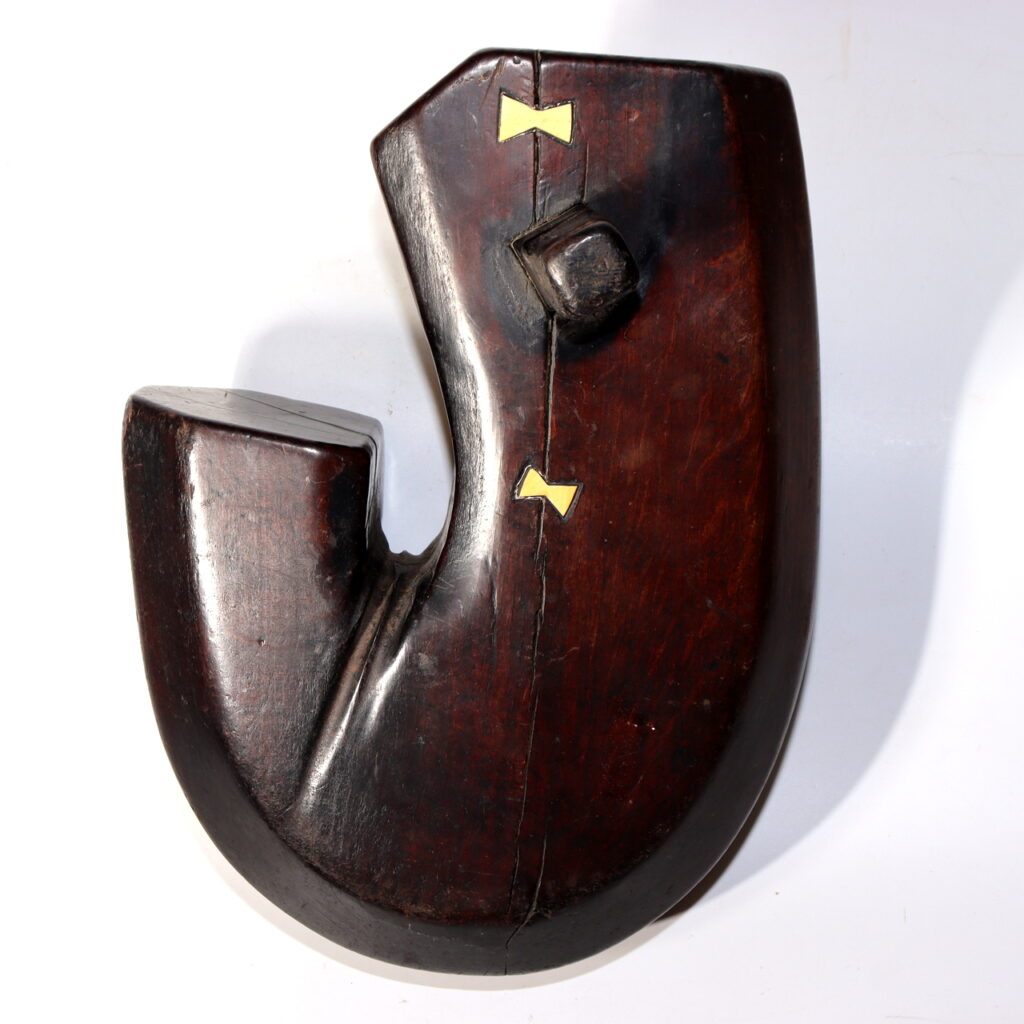
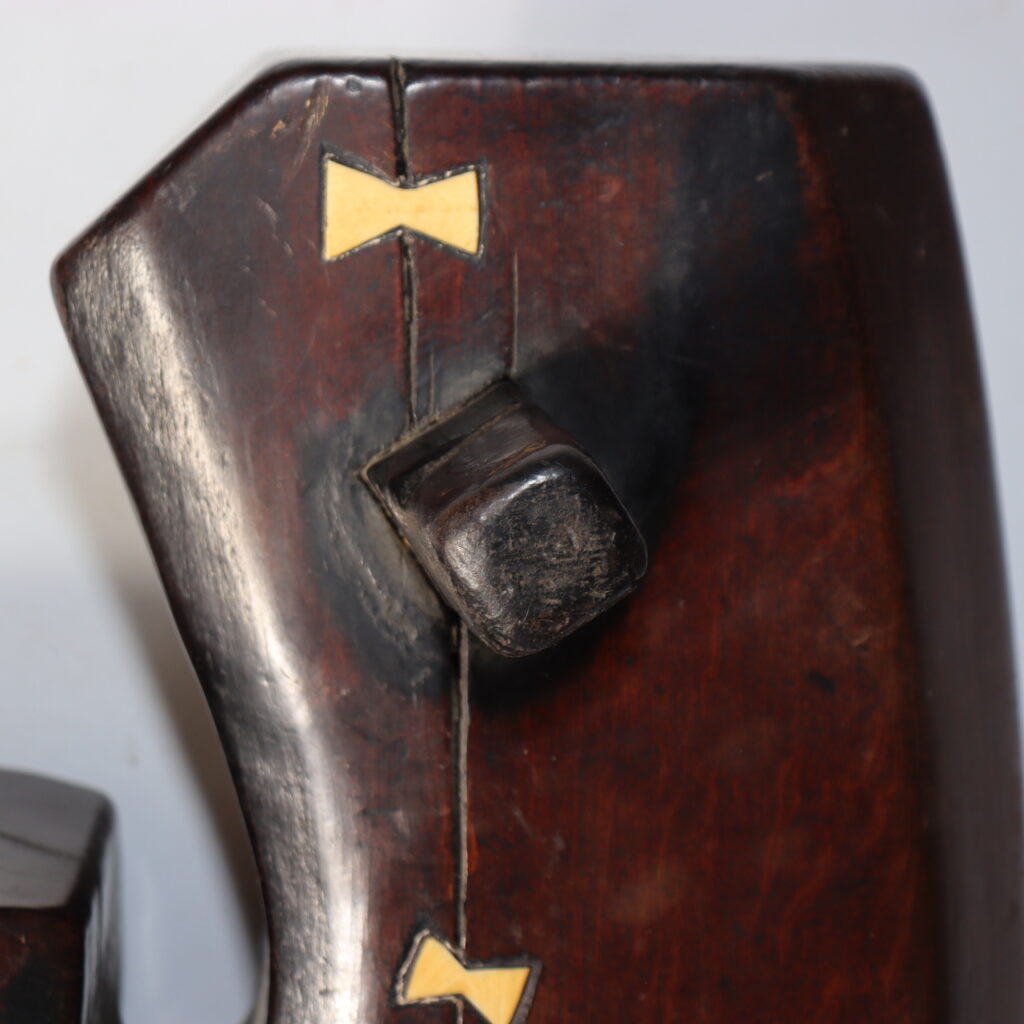
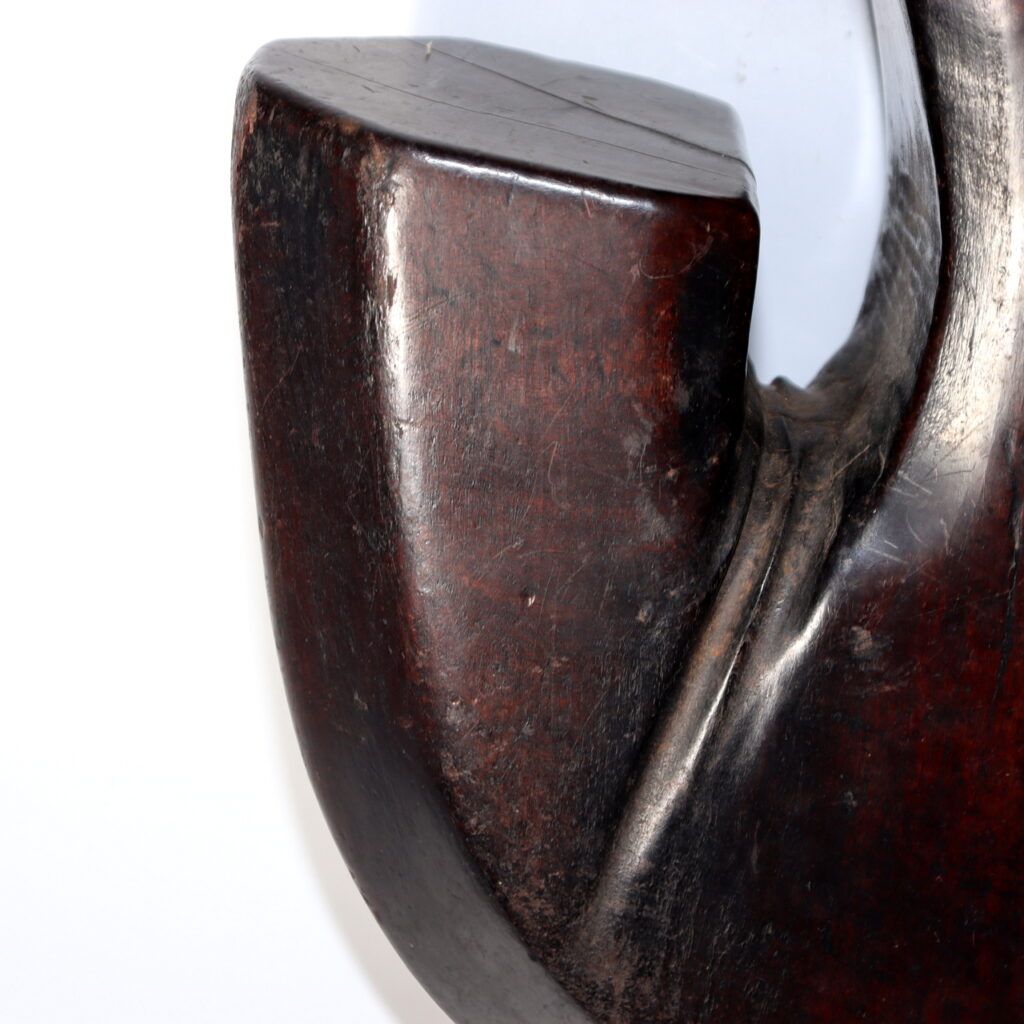

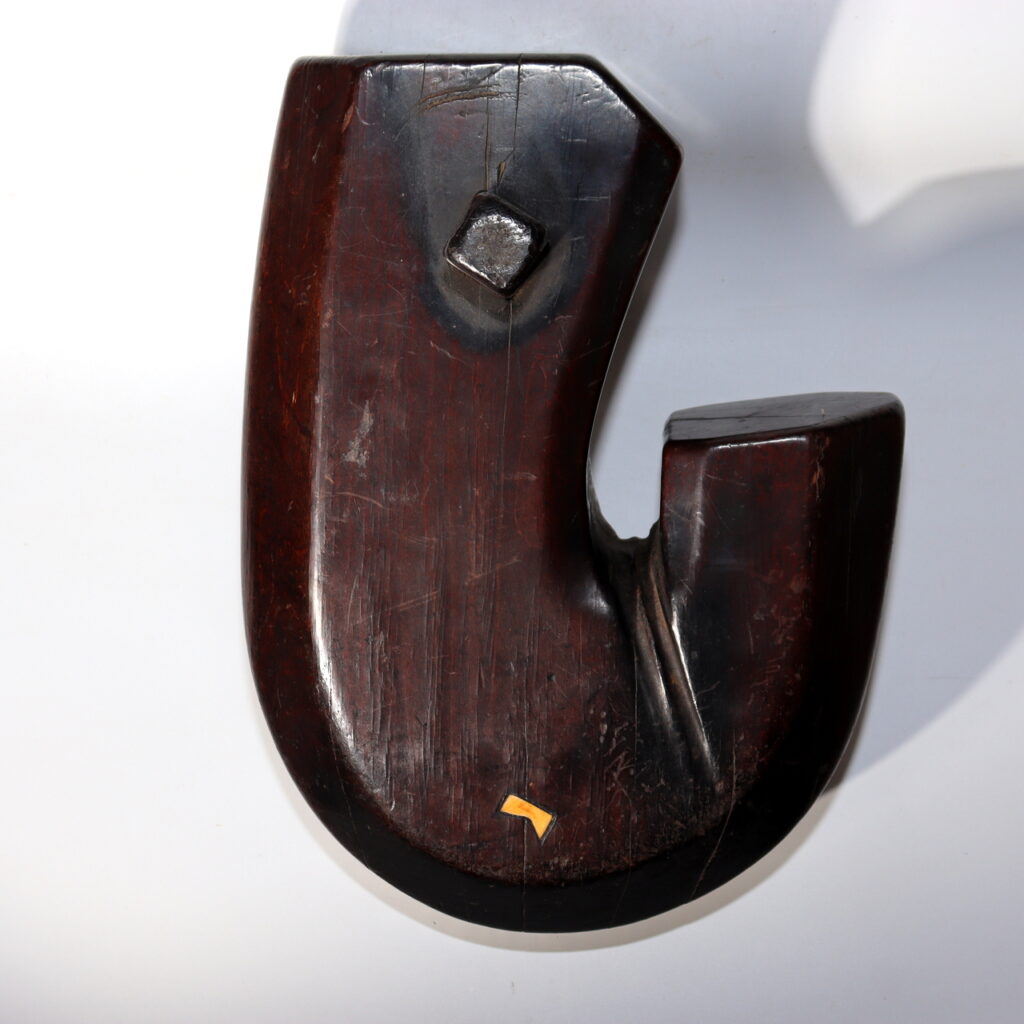
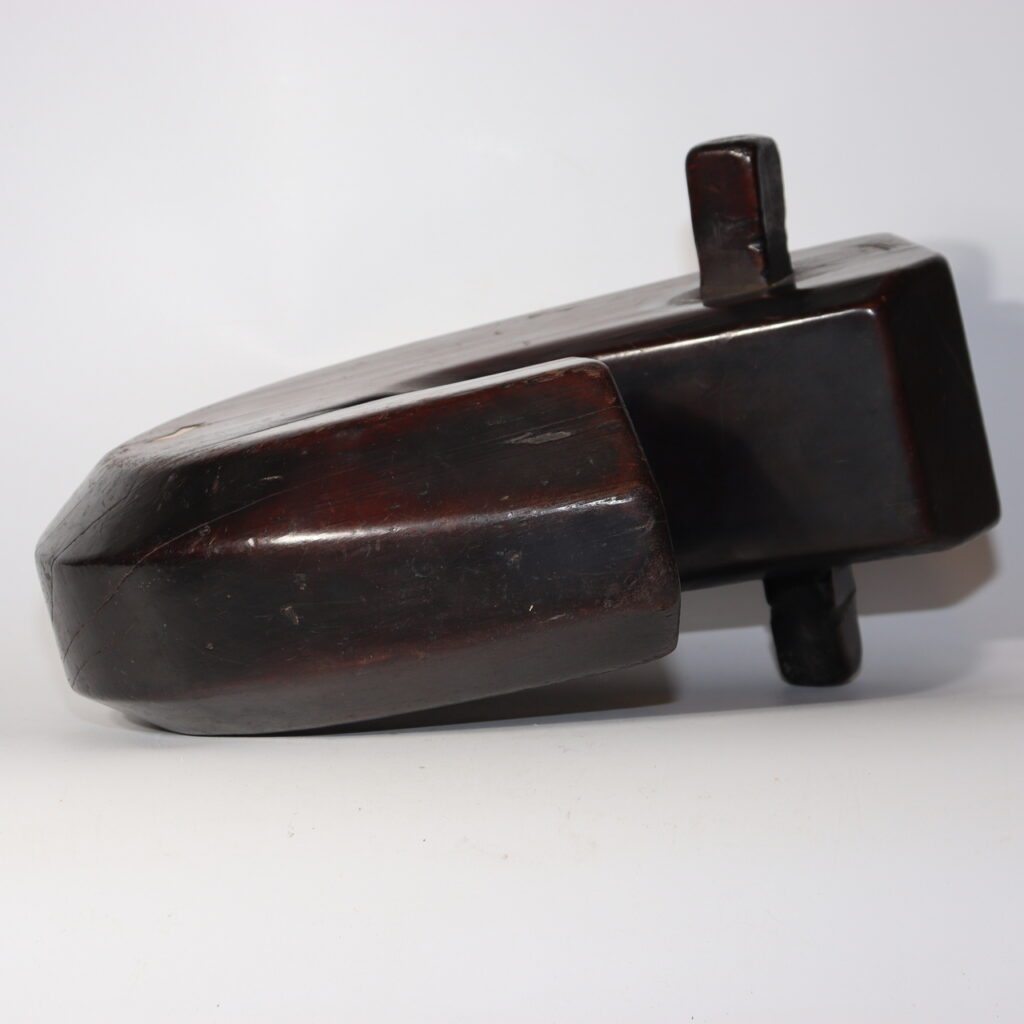
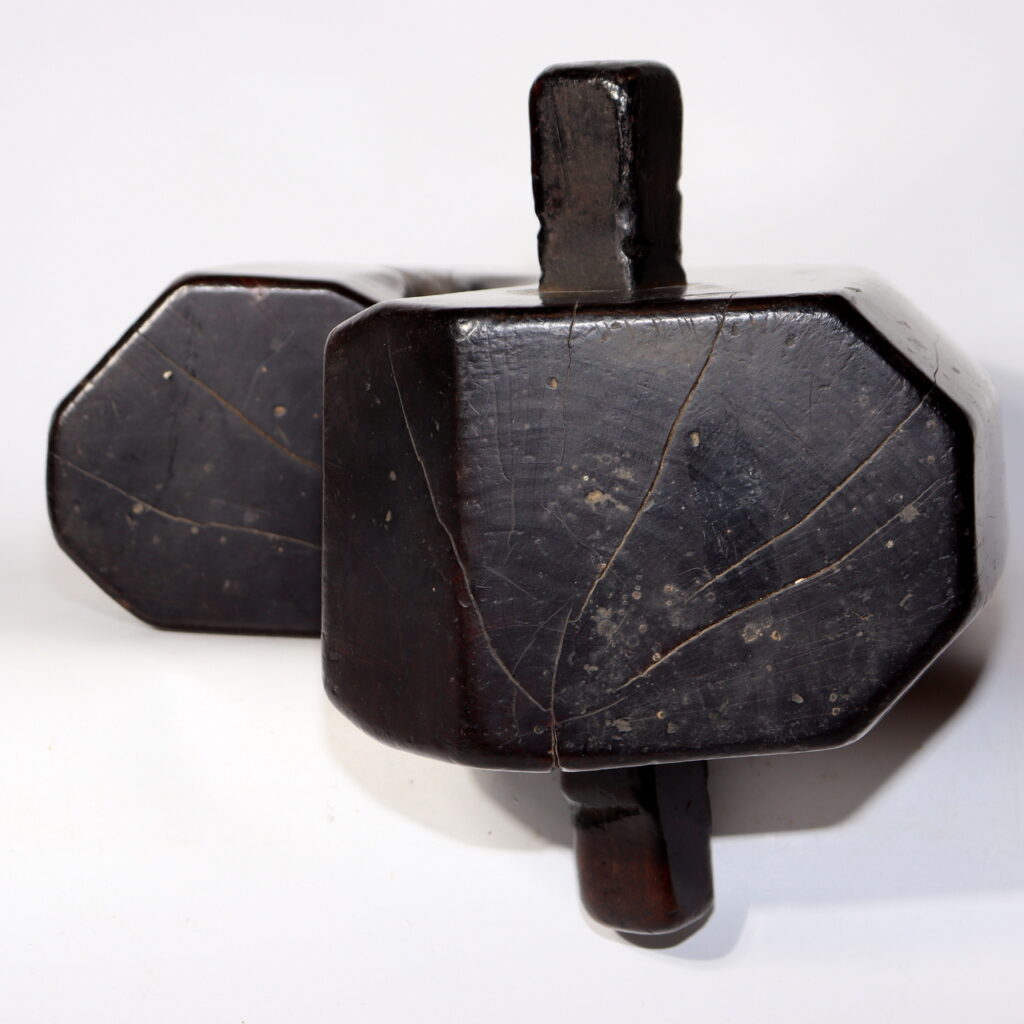

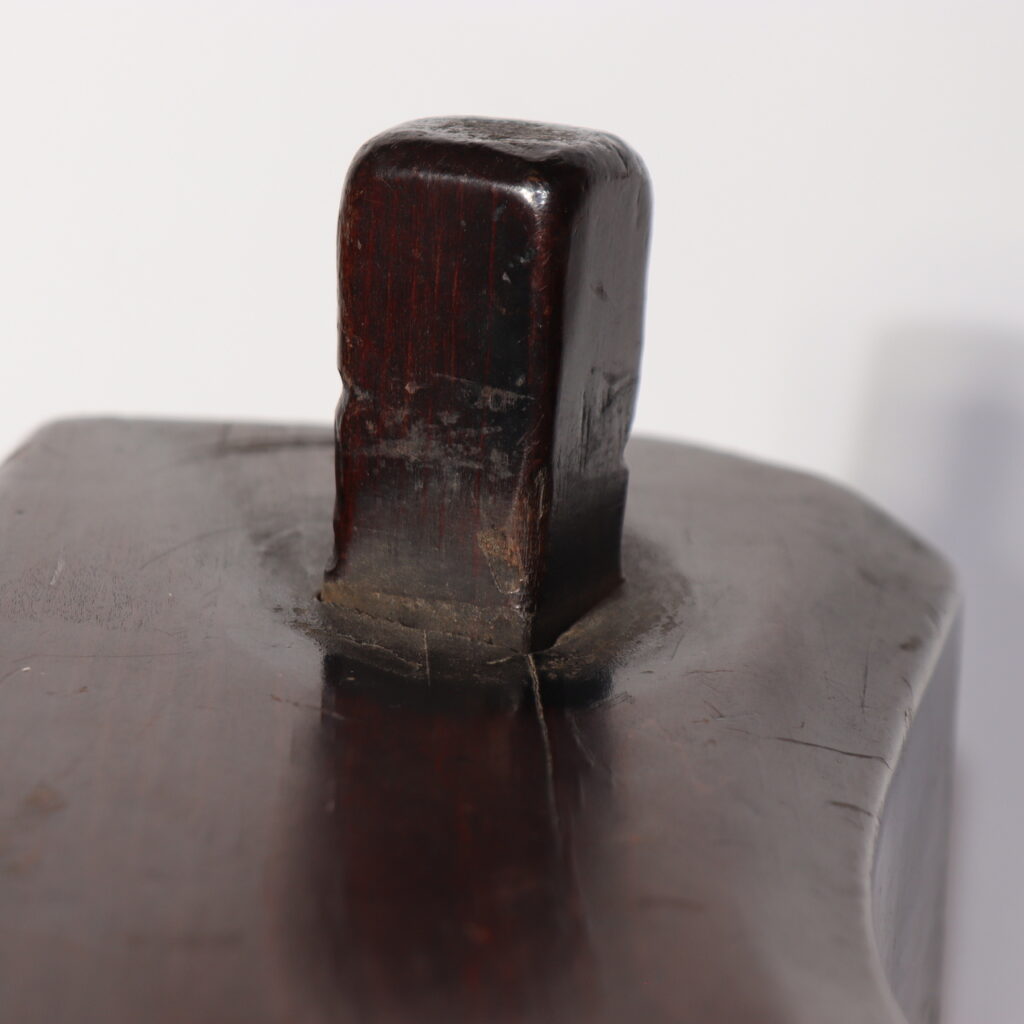
In the heart of a traditional Japanese home was the irori—a sunken hearth where warmth, nourishment, and conversation gathered. Suspended above it hung a tool both humble and poetic: the sorakagi, a wooden hearth hook. This Meiji-era Japanese antique exemplifies not just utility, but the quiet elegance of folk craft, wabi-sabi aesthetics, and the enduring spirit of repair.
The Story Behind This Piece
Unlike the more well-known jizai kagi, which uses a mechanism to adjust height, the sorakagi (空鉤) is simpler in form—an elegantly curved wooden arm used to suspend kettles and cooking implements over the hearth. Its name literally means “empty hook,” and its design reflects both restraint and purposeful function.
This particular piece dates back to the Meiji period (1868–1912) and shows clear evidence of long-term use. The surface is richly darkened from years of exposure to hearth smoke and heat. Its edges are smoothed by time and touch, giving it an organic, tactile character.
Features That Set This Item Apart
- Material and Patina: Crafted from solid wood, the hook has developed a deep, charcoal-toned surface with beautiful natural variations.
- Chigiri Repair with Butterfly Inlay: The highlight of this piece is the use of bone inlays in the shape of butterflies, applied using the Chigiri (契り) method. This traditional technique—both decorative and structural—was used to reinforce cracks and splits, symbolizing continuity and bond. In Japanese aesthetics, butterflies are also symbolic of transformation and spiritual connection.
- Visible Cracks, Proudly Healed: Rather than being hidden, the drying cracks are embraced and stabilized with craftsmanship. This speaks to the same values as kintsugi—celebrating damage as part of an object’s story.
- Folk Utility Meets Art: Though born from necessity, this piece now stands as a folk sculpture, suitable for display in wabi-sabi interiors, tea rooms, or as part of a Japanese antique hearth collection.
Why Collectors and Curators Appreciate It
This sorakagi is more than a cooking implement—it is a relic of a vanished way of life, where form followed function, and repair was revered. It resonates with:
- Collectors of Japanese antiques or hearth tools
- Fans of mingei (folk art) and functional sculpture
- Interior designers seeking authentic wabi-sabi accents
- Practitioners of tea ceremony, zen arts, or rustic minimalism
Its modest scale and elegant curve make it especially suited for intimate interiors or contemplative spaces.
Conclusion: The Beauty of Suspension and Survival
This Meiji-era sorakagi carries the weight of time not with burden, but with grace. Every curve, every inlaid butterfly, every trace of fire tells a story of resilience and renewal. As a decorative object, it invites us not only to admire its form, but to remember the hands, the hearths, and the homes it once served.
If this item is no longer available, you can find other thoughtfully restored Japanese antiques and hearth tools here:
🔗 Browse our full collection